-
 Bitcoin
Bitcoin $107,247.2038
-0.18% -
 Ethereum
Ethereum $2,424.7947
0.34% -
 Tether USDt
Tether USDt $1.0003
-0.02% -
 XRP
XRP $2.1171
-3.33% -
 BNB
BNB $645.6618
0.06% -
 Solana
Solana $141.5898
-1.32% -
 USDC
USDC $0.9998
0.00% -
 TRON
TRON $0.2710
-0.41% -
 Dogecoin
Dogecoin $0.1602
-2.99% -
 Cardano
Cardano $0.5553
-2.28% -
 Hyperliquid
Hyperliquid $36.3019
-2.42% -
 Bitcoin Cash
Bitcoin Cash $491.7212
2.04% -
 Chainlink
Chainlink $13.0810
-0.23% -
 Sui
Sui $2.6080
-5.06% -
 UNUS SED LEO
UNUS SED LEO $9.0040
-0.05% -
 Stellar
Stellar $0.2350
-3.06% -
 Avalanche
Avalanche $17.2294
-2.31% -
 Toncoin
Toncoin $2.8075
-1.05% -
 Shiba Inu
Shiba Inu $0.0...01121
-3.43% -
 Litecoin
Litecoin $84.2215
-0.32% -
 Hedera
Hedera $0.1429
-4.88% -
 Monero
Monero $312.2199
-0.90% -
 Dai
Dai $0.9997
-0.01% -
 Ethena USDe
Ethena USDe $0.9999
-0.02% -
 Polkadot
Polkadot $3.2973
-2.60% -
 Bitget Token
Bitget Token $4.4742
3.12% -
 Pi
Pi $0.5631
-10.10% -
 Uniswap
Uniswap $6.7817
-2.06% -
 Pepe
Pepe $0.0...09252
-3.74% -
 Aave
Aave $251.3830
-2.24%
Is the three-day confirmation of the island reversal gap at the daily level valid?
The island reversal gap in crypto trading signals potential trend changes, confirmed by the three-day rule, helping traders spot high-probability reversals.
Jun 17, 2025 at 09:49 pm
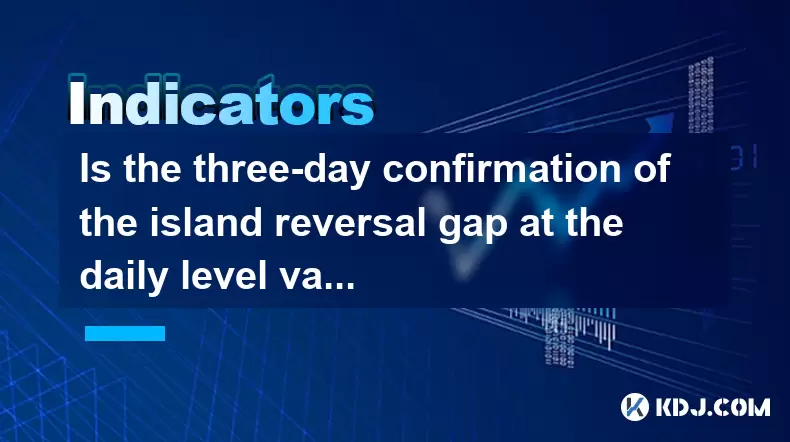
Understanding the Island Reversal Gap in Cryptocurrency Trading
In cryptocurrency trading, technical analysis plays a pivotal role in identifying potential market reversals. One such pattern is the island reversal gap, which signals a possible trend change. This pattern consists of a gap followed by a period of consolidation or sideways movement and then another gap in the opposite direction, leaving an "island" of price action disconnected from the broader trend.
The structure of this pattern suggests strong buying or selling pressure at both ends of the island. Traders often look for confirmation before entering trades based on this formation. The three-day confirmation rule is one such method used to validate the reliability of this pattern.
What Is the Three-Day Confirmation Rule?
The three-day confirmation rule refers to a guideline where traders wait for three consecutive days of price movement following the island reversal gap to confirm its validity. If the price continues moving in the direction suggested by the reversal after this period, it strengthens the case for the pattern being genuine.
- Traders observe whether the price breaks below or above the island’s range.
- They monitor volume during the three-day window to ensure it aligns with the expected reversal.
- Price action should not return to fill the gap within these three days.
This waiting period helps filter out false signals caused by short-term volatility, especially in highly speculative markets like cryptocurrencies.
How Does the Island Reversal Gap Work in Crypto Markets?
Cryptocurrencies are known for their high volatility and frequent gaps due to 24/7 trading across global exchanges. Gaps are common, but true island reversals are rare. When they do occur, they can be powerful indicators if confirmed properly.
- First Gap Formation: A sharp move away from a consolidation area creates the first gap.
- Island Formation: A small range forms between two gaps, isolated from the main trend.
- Second Gap Direction: The second gap must go in the opposite direction of the first one.
- Confirmation Period: After the second gap, the next three days’ price behavior confirms or invalidates the reversal.
In crypto charts, especially daily timeframes, these patterns can appear dramatic and attract attention from algorithmic and retail traders alike.
Steps to Confirm the Island Reversal Gap Over Three Days
To apply the three-day confirmation rule effectively, follow these steps:
- Identify the complete island reversal pattern: Look for two gaps with a distinct island in between.
- Measure the size of the gaps: Larger gaps tend to carry more weight as they reflect stronger momentum shifts.
- Observe volume spikes: Volume should rise on both gaps, particularly the second one, indicating strong participation.
- Monitor the next three candles: These should continue in the direction of the reversal without revisiting the island range.
- Use additional tools for confluence: Incorporate moving averages, RSI, or support/resistance levels to enhance confirmation accuracy.
If all conditions align, the pattern becomes more credible for making trade decisions.
Common Pitfalls When Applying the Three-Day Rule
While the three-day confirmation seems straightforward, several pitfalls can mislead traders:
- Ignoring context: Not all island reversals are created equal; they need to occur at key support or resistance zones.
- Overlooking market sentiment: Crypto markets react quickly to news and macroeconomic factors, which may override technical patterns.
- Misinterpreting gaps: In crypto, minor slippage gaps are common and shouldn’t be mistaken for true reversal gaps.
- Failing to adjust for time zones: Since crypto is traded globally, gaps may form differently depending on exchange activity in various regions.
These mistakes can lead to premature entries or missed opportunities when using the three-day confirmation method.
Examples of Island Reversals Confirmed Within Three Days in Crypto Charts
Let’s consider historical examples on major crypto pairs like BTC/USDT or ETH/USDT:
- On a particular daily chart, Bitcoin formed a bullish island reversal after a sharp decline. The first gap down occurred on increased volume, followed by a few days of consolidation. Then, a gap up appeared, forming the island. Over the next three days, the price continued rising, confirming the reversal.
- Another example involved Ethereum experiencing a bearish island reversal. After a rally, a gap down signaled weakness. The consolidation phase was followed by another gap lower. Over the subsequent three days, the downtrend accelerated, validating the pattern.
Each case required careful observation of volume, candlestick patterns, and alignment with broader trends to ensure accurate identification and confirmation.
Frequently Asked Questions (FAQ)
Q: Can the island reversal gap appear on intraday charts in crypto?
A: Yes, although it's more reliable on higher timeframes like the daily chart, it can occasionally form on 4-hour or 1-hour charts. However, due to the noise in shorter intervals, confirmation becomes less dependable.
Q: How does the island reversal differ from other gap types in crypto?
A: Unlike common gaps or runaway gaps, the island reversal features two opposing gaps with a distinct isolation zone. It also implies a trend reversal rather than continuation.
Q: Should I always wait three days for confirmation in fast-moving crypto markets?
A: While the three-day confirmation rule is a guideline, aggressive traders might act earlier with supporting indicators. Conservative traders prefer the full three-day validation to reduce false signals.
Q: Are there any tools or indicators that help identify island reversal gaps automatically?
A: Some advanced charting platforms like TradingView offer custom scripts or built-in tools to scan for gaps and patterns, including island reversals. However, manual verification remains crucial for accuracy.
Disclaimer:info@kdj.com
The information provided is not trading advice. kdj.com does not assume any responsibility for any investments made based on the information provided in this article. Cryptocurrencies are highly volatile and it is highly recommended that you invest with caution after thorough research!
If you believe that the content used on this website infringes your copyright, please contact us immediately (info@kdj.com) and we will delete it promptly.
- TRUMP Token Tumult: Liquidity Exit Sparks Crash Fears!
- 2025-06-27 12:30:12
- Elementary, My Dear Collector: Sherlock Holmes Coins Fetch High Prices!
- 2025-06-27 12:35:12
- Sui Growth: Blockchain Ecosystem Expansion in 2025
- 2025-06-27 12:47:14
- Coinbase Stock Soars to New Highs: Is the Rally Sustainable?
- 2025-06-27 12:47:14
- Pi Coin Price Prediction Today: Will It Ever Break Free?
- 2025-06-27 12:50:12
- Cryptos to Buy Now: Riding the Climbing Price Wave
- 2025-06-27 12:52:09
Related knowledge

Does the CCI indicator break through +200 mean that it is seriously overbought?
Jun 27,2025 at 01:08pm
Understanding the CCI Indicator and Its Relevance in Cryptocurrency TradingThe Commodity Channel Index (CCI) is a technical analysis tool widely used by traders in various financial markets, including cryptocurrency. Originally developed by Donald Lambert for commodities, it has since been adopted across asset classes to identify overbought or oversold ...

How lethal is the death cross of EXPMA12 and 50 lines?
Jun 27,2025 at 11:15am
Understanding the Death Cross in EXPMA IndicatorsThe death cross is a technical analysis pattern that signals a potential bearish trend reversal. In the context of the EXPMA (Exponential Moving Average), particularly when analyzing the crossover between the EXPMA12 and EXPMA50 lines, traders often interpret this as a strong sell signal. The death cross ...
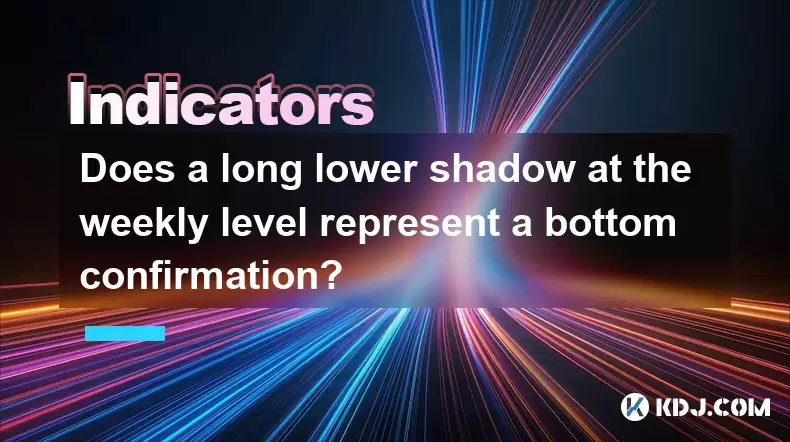
Does a long lower shadow at the weekly level represent a bottom confirmation?
Jun 27,2025 at 10:56am
Understanding the Weekly Lower Shadow in Candlestick AnalysisIn cryptocurrency trading, weekly candlestick patterns are often scrutinized for potential trend reversals. A long lower shadow at the weekly level indicates that during the week, sellers pushed prices down significantly but were met with strong buying pressure that closed the candle near its ...
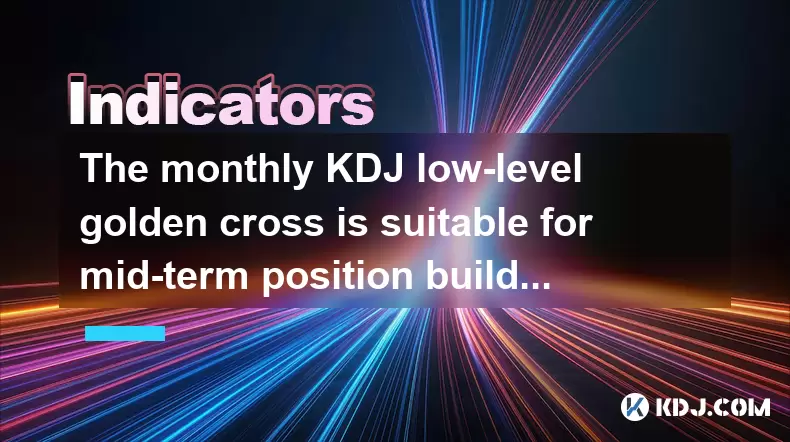
The monthly KDJ low-level golden cross is suitable for mid-term position building?
Jun 27,2025 at 03:14am
Understanding the Monthly KDJ IndicatorThe KDJ indicator, also known as the stochastic oscillator, is a momentum tool widely used in technical analysis within the cryptocurrency market. It consists of three lines: the K line, the D line, and the J line. These lines help traders identify overbought or oversold conditions, potential trend reversals, and e...
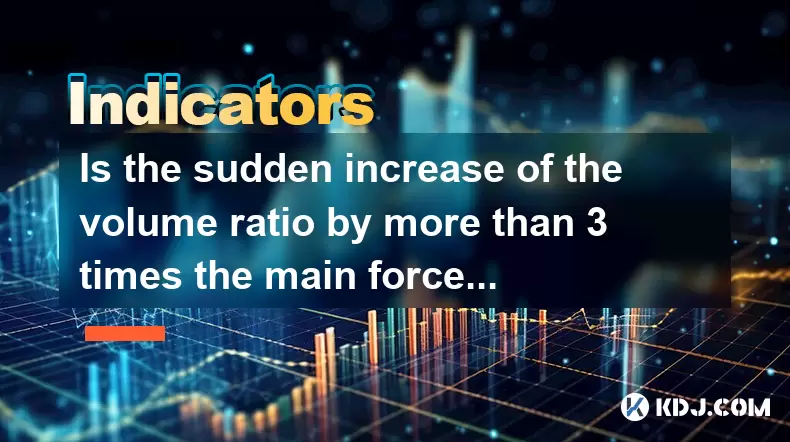
Is the sudden increase of the volume ratio by more than 3 times the main force entering the market?
Jun 27,2025 at 12:57pm
Understanding Volume Ratio in Cryptocurrency TradingIn cryptocurrency trading, the volume ratio refers to the comparison between the current trading volume and the average volume over a specific period, usually 20 or 30 days. This metric helps traders identify unusual market activity that could signal potential price movements. When the volume ratio inc...
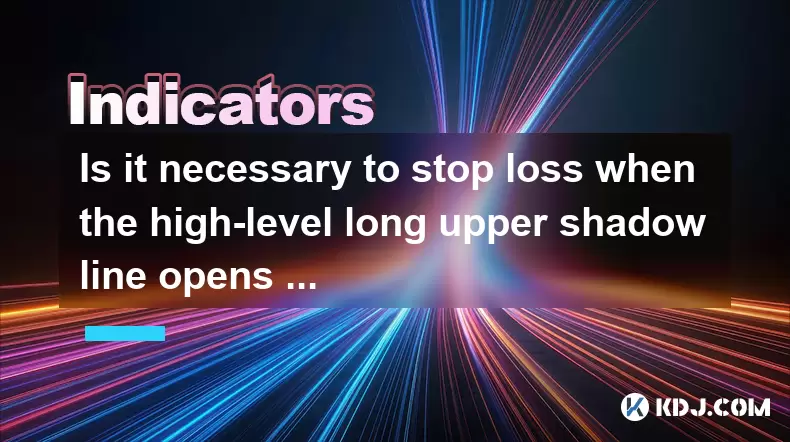
Is it necessary to stop loss when the high-level long upper shadow line opens low the next day?
Jun 27,2025 at 08:22am
Understanding the High-Level Long Upper Shadow LineIn technical analysis, a long upper shadow line refers to a candlestick pattern where the price moves significantly higher during the session but closes much lower, forming a long wick on the top. When this occurs at a high level, it suggests strong resistance and potential reversal. This type of candle...

Does the CCI indicator break through +200 mean that it is seriously overbought?
Jun 27,2025 at 01:08pm
Understanding the CCI Indicator and Its Relevance in Cryptocurrency TradingThe Commodity Channel Index (CCI) is a technical analysis tool widely used by traders in various financial markets, including cryptocurrency. Originally developed by Donald Lambert for commodities, it has since been adopted across asset classes to identify overbought or oversold ...

How lethal is the death cross of EXPMA12 and 50 lines?
Jun 27,2025 at 11:15am
Understanding the Death Cross in EXPMA IndicatorsThe death cross is a technical analysis pattern that signals a potential bearish trend reversal. In the context of the EXPMA (Exponential Moving Average), particularly when analyzing the crossover between the EXPMA12 and EXPMA50 lines, traders often interpret this as a strong sell signal. The death cross ...

Does a long lower shadow at the weekly level represent a bottom confirmation?
Jun 27,2025 at 10:56am
Understanding the Weekly Lower Shadow in Candlestick AnalysisIn cryptocurrency trading, weekly candlestick patterns are often scrutinized for potential trend reversals. A long lower shadow at the weekly level indicates that during the week, sellers pushed prices down significantly but were met with strong buying pressure that closed the candle near its ...

The monthly KDJ low-level golden cross is suitable for mid-term position building?
Jun 27,2025 at 03:14am
Understanding the Monthly KDJ IndicatorThe KDJ indicator, also known as the stochastic oscillator, is a momentum tool widely used in technical analysis within the cryptocurrency market. It consists of three lines: the K line, the D line, and the J line. These lines help traders identify overbought or oversold conditions, potential trend reversals, and e...

Is the sudden increase of the volume ratio by more than 3 times the main force entering the market?
Jun 27,2025 at 12:57pm
Understanding Volume Ratio in Cryptocurrency TradingIn cryptocurrency trading, the volume ratio refers to the comparison between the current trading volume and the average volume over a specific period, usually 20 or 30 days. This metric helps traders identify unusual market activity that could signal potential price movements. When the volume ratio inc...

Is it necessary to stop loss when the high-level long upper shadow line opens low the next day?
Jun 27,2025 at 08:22am
Understanding the High-Level Long Upper Shadow LineIn technical analysis, a long upper shadow line refers to a candlestick pattern where the price moves significantly higher during the session but closes much lower, forming a long wick on the top. When this occurs at a high level, it suggests strong resistance and potential reversal. This type of candle...
See all articles
























































































